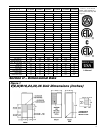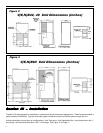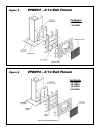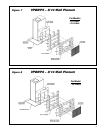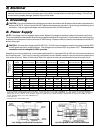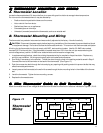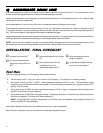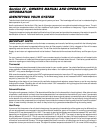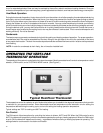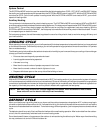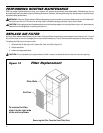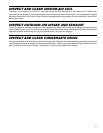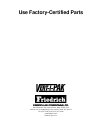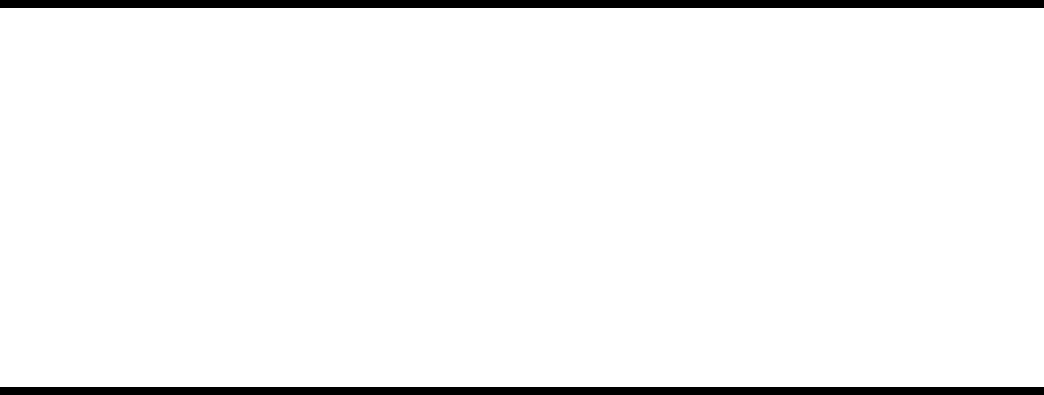
15
IDENTIFYING YOUR SYSTEM
Take the time to familiarize yourself with the type of system you have. This knowledge will be of use in understanding the
basic operation of your unit.
A self-contained unit, like the Vert-I-Pak, has all of its major components in one cabinet located inside your home. The unit
does not have a separate outdoor unit like a traditional “split-system” air conditioner or heat pump. Figure 4 shows the
location of the major components inside the cabinet.
The product model and rating data label is affixed to the unit front panel and provides the necessary information for specific
identification of the unit. You should familiarize yourself with the model and serial numbers listed on the label.
IMPORTANT FACTS
To better protect your investment and to eliminate unnecessary service calls, familiarize yourself with the following facts:
Your system should never be operated without a clean air filter properly installed. A dirty, clogged air filter will increase
operating costs and shorten the life of the unit. The air filter should be replaced as it becomes dirty.
Supply-air and return-air registers should not be blocked. Restricted airflow reduces the efficiency and life span of your
unit.
For your system to function properly, it MUST have a constant supply of outdoor air to the outdoor air coil located inside
the unit. The outdoor-air intake and exhaust openings are located on the back side of the unit. Familiarize yourself with the
outside air openings on the building and check to ensure that they are not obstructed.
Thermostat
Your multipurpose indoor thermostat is the control center for your comfort system. You should familiarize yourself with its
proper operation. Attempting to control the system by other means – for instance, switching the electrical supply power ON
and OFF – may cause damage to the unit.
With some thermostats, increasing the HEAT mode temperature set point more than 2°F may cause the auxiliary electric
heaters to operate to satisfy the call for heating. To minimize energy costs, do not increase the HEAT mode temperature
set point by more than 2°F at a time.
Depending on the design of your home and its ventilation ductwork and registers, areas of warm or cool air may develop
throughout the home. Operating the unit with the fan switch “ON” increases air mixing throughout the home and reduces
temperature variations within the home.
Dehumidification
During the cooling season, the Vert-I-Pak also dehumidifies the air in the home while is it cooling the air. After a few minutes
of operation, water should run freely from the condensate drain line extended to the outside of your home. If condensate
is not running from the drain line, check to be sure that the drain hose or pipe is properly connected to the drain fitting located
on the bottom of the unit which is accessible from beneath the home. Check the drain line periodically during the cooling
season to ensure the condensate is running freely from outside the home and draining away from the home’s foundation.
(Note: in lower humidity climates, the indoor air may be too dry to generate condensate during the cooling mode.)
Heat Pump
If you are a first-time owner of an all-electric heat pump, the operating characteristics of the system may be different than
you are accustomed to as compared to conventional electric resistance, gas or oil furnaces. Air entering a conventional
furnace at 60°F may be warmed 60° to 100°F. The supply air leaving the registers would then be between 120° and 160°F
depending on the system. A heat pump warms the same 60°F air 20° to 30°F. The supply air leaving the registers would
then be between 80° and 90°F. This air may feel cool because it is slightly less than your body temperature. However, it
is sufficiently warm to keep you comfortable and is adding heat to your home. A heat pump will run for much longer periods
of time than a conventional furnace. This longer operational time is normal for all heat pumps and is saving you energy in
comparison to many conventional furnaces. On days with outdoor temperatures below 40°F, it is normal for the heat pump
Section IV – OWNER'S MANUAL AND OPERATING
INFORMATION



